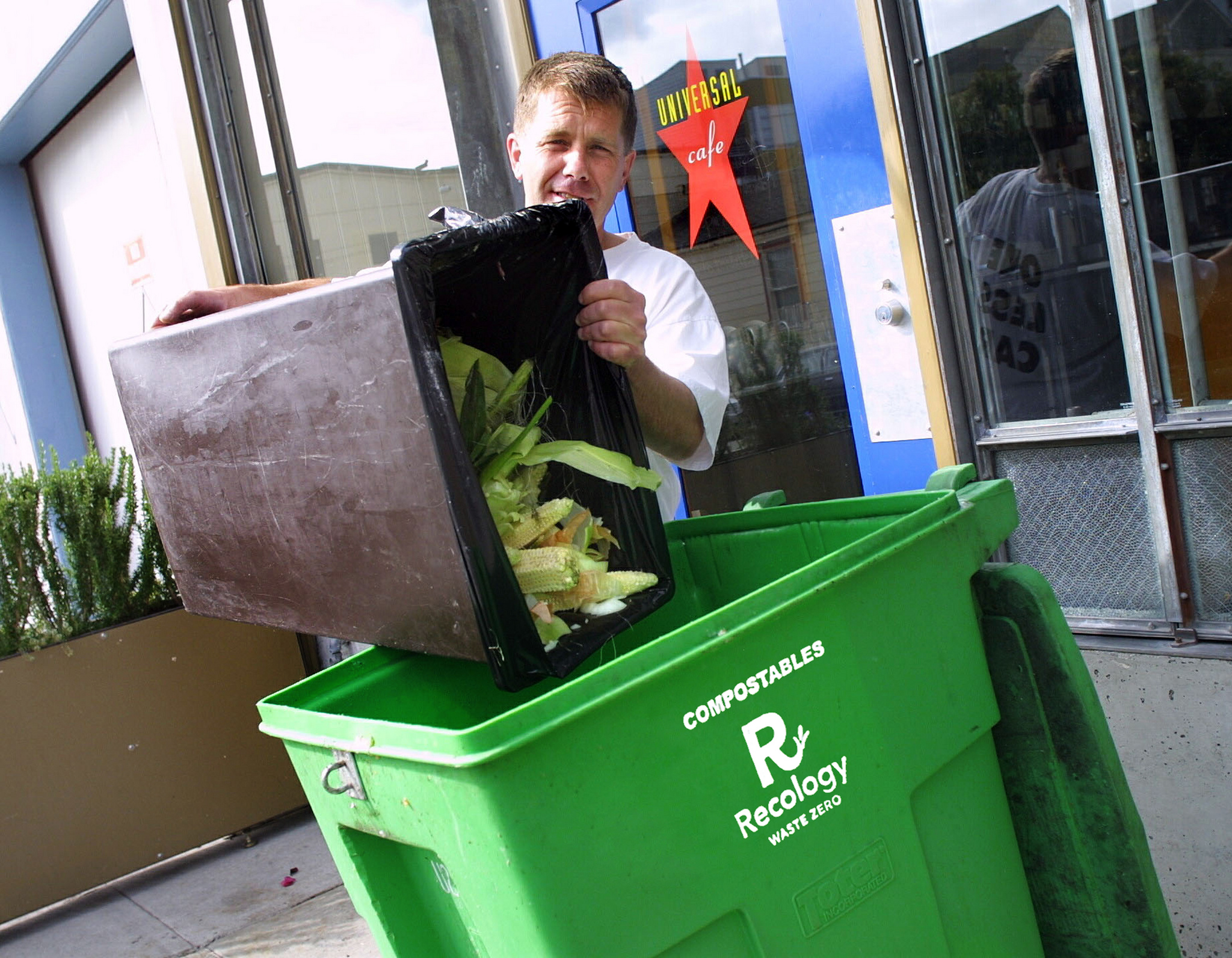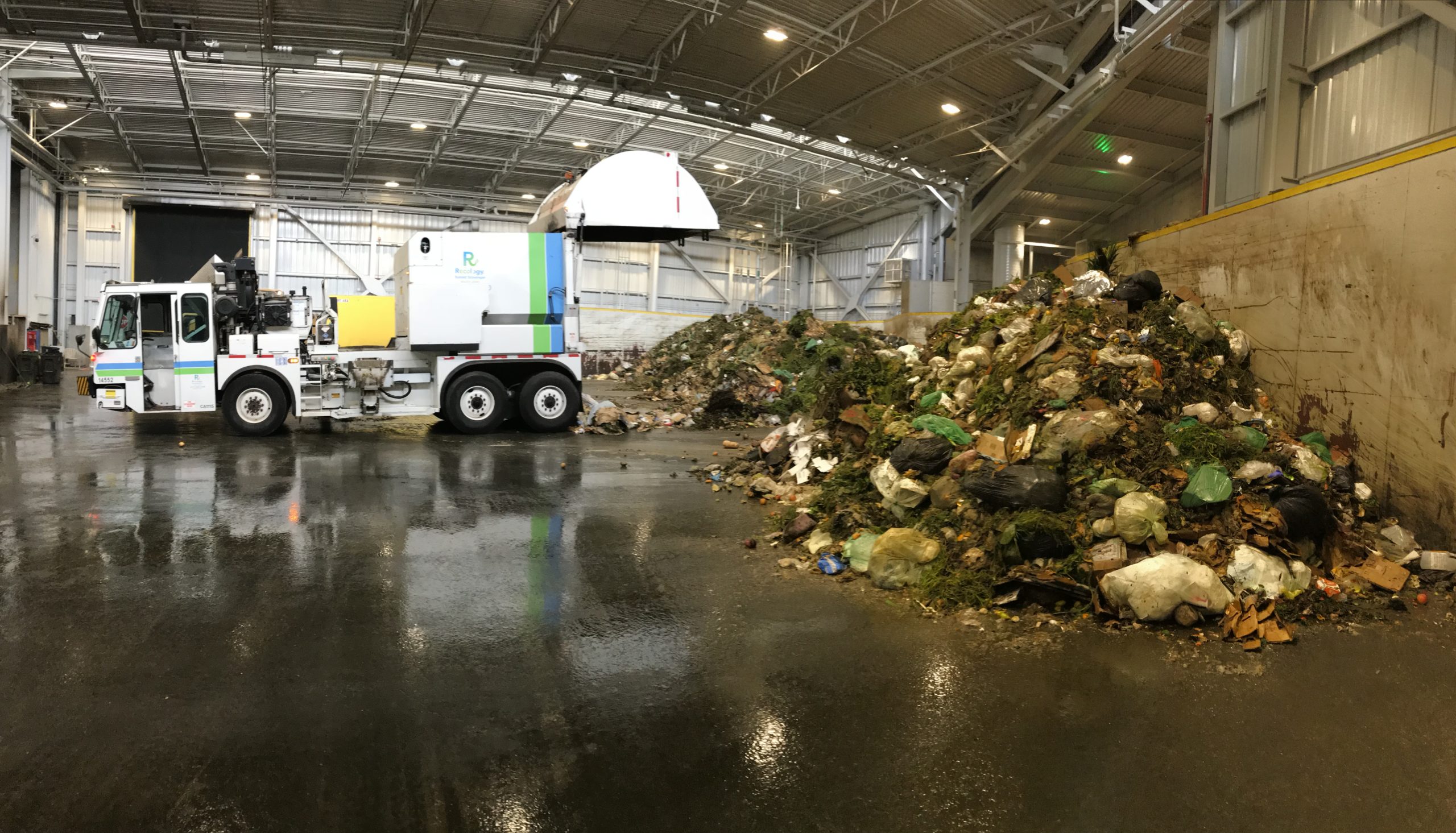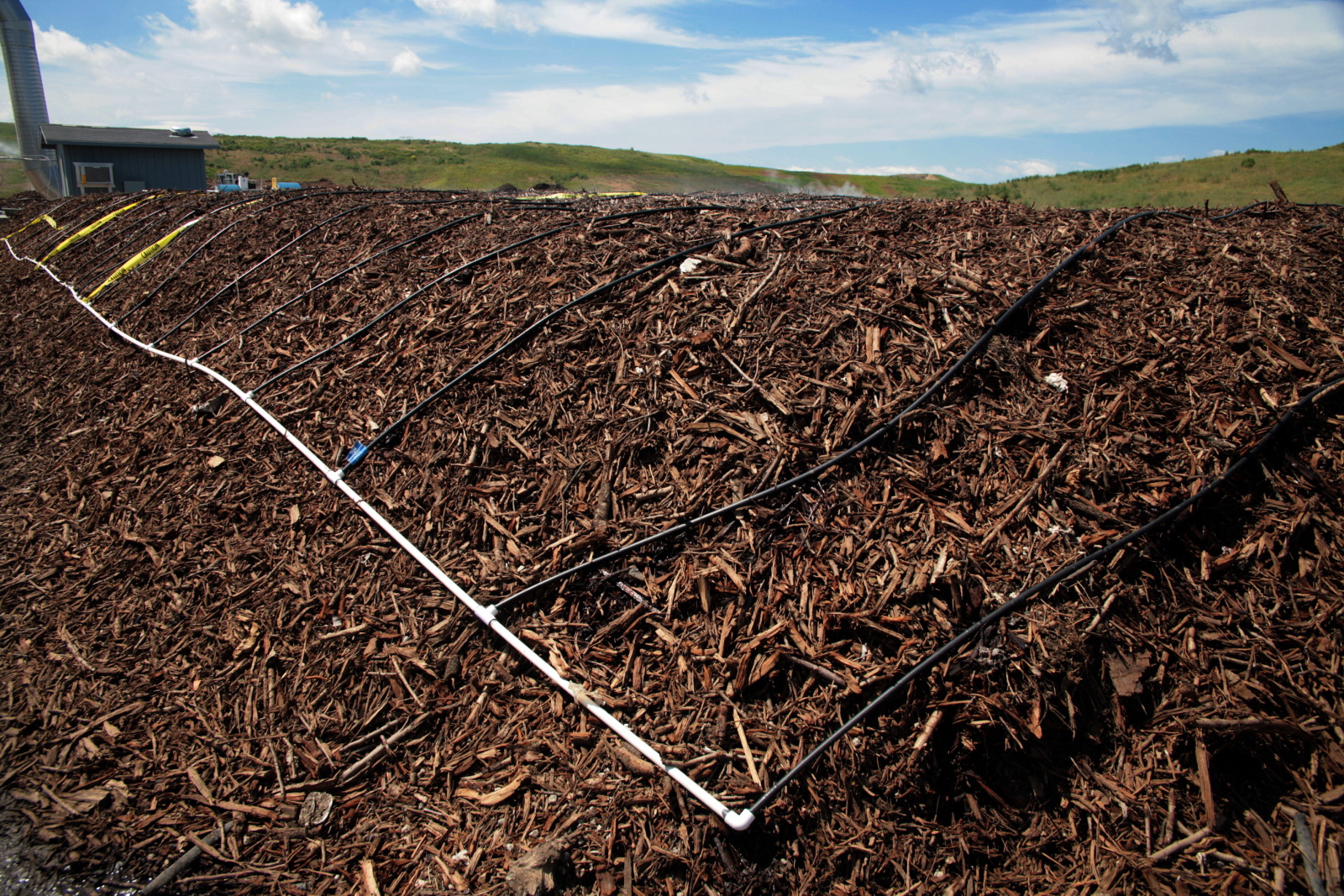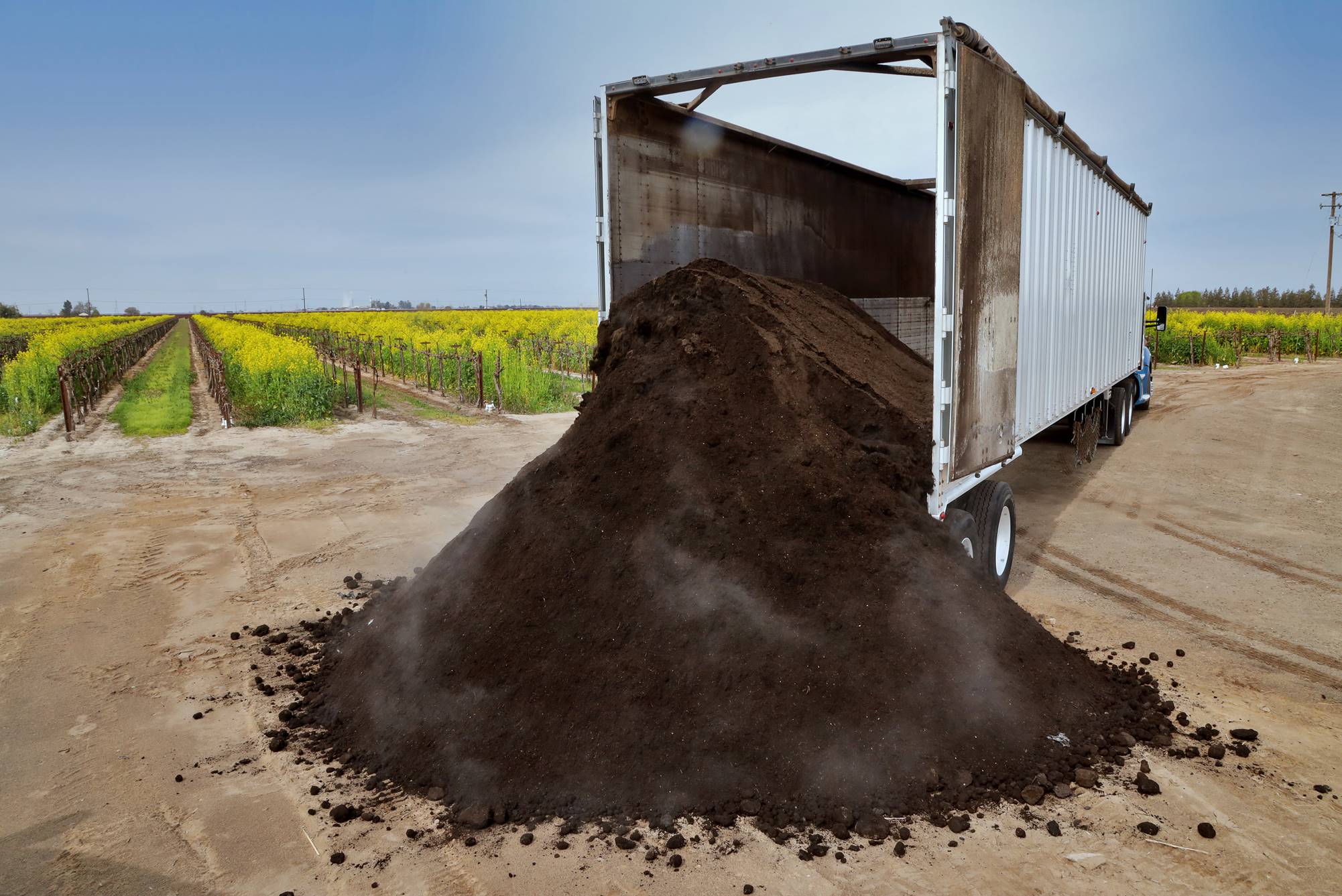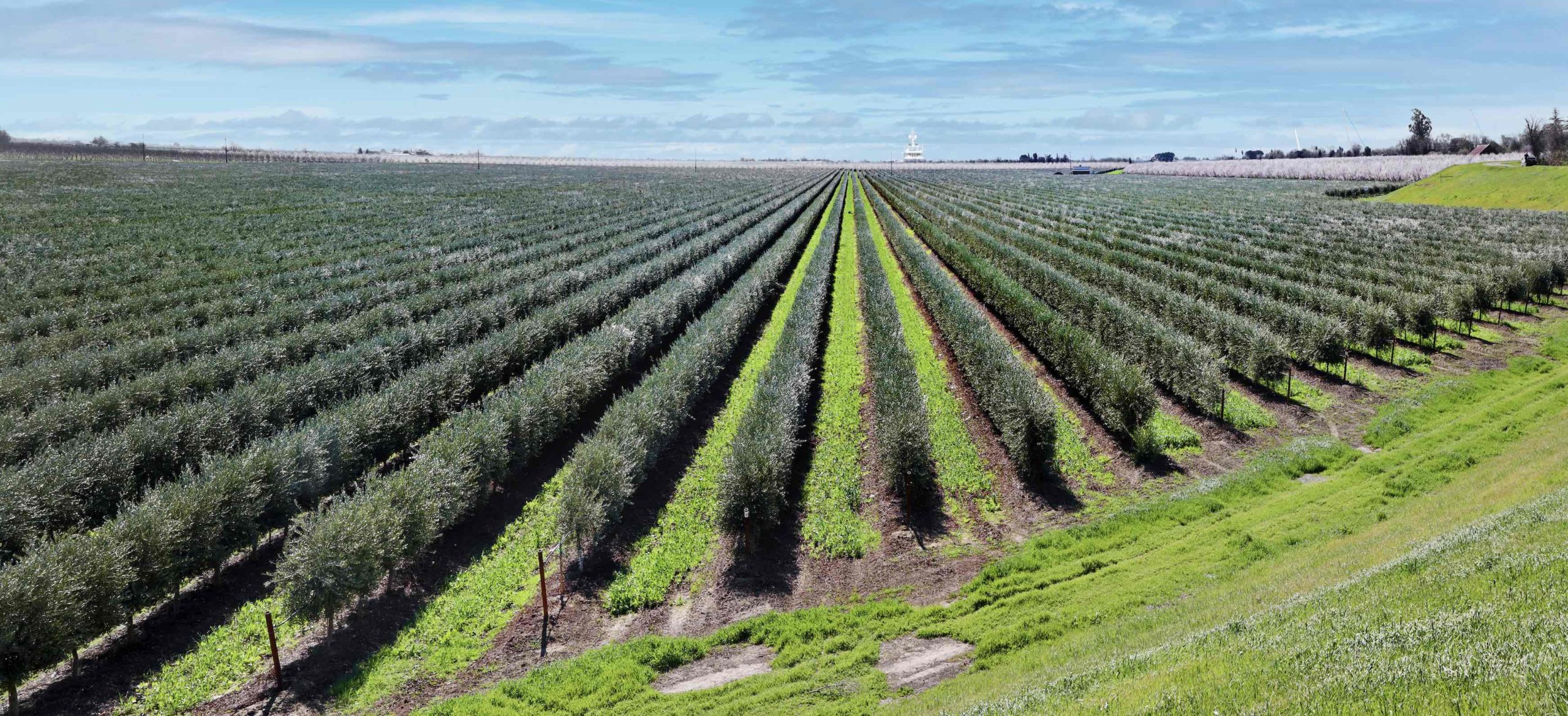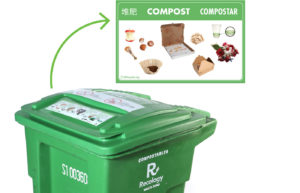In San Francisco, material that belongs in your compost bin generally falls within three categories: food scraps, yard trimmings, and food-soiled paper.
- For a complete list of what belongs in your compost cart, please visit our What Goes Where page.
What doesn’t belong in my compost bin?
Avoid placing plastics, glass, and metals into the compost bin.
Commonly misplaced materials
Materials that do not belong in the compost bin are known as contaminants. These items often cause operational issues at our composting facilities and leave our compost littered with non-compostable items.
Also, paper and cardboard that are not soiled by food can be placed in your blue recycling bin!
Looking for more educational information? A good place to start is with the actual bin!
Stickers on bins provide helpful information about accepted items.
Recology also offers training videos and live presentations for residents and businesses where you can have your sorting questions answered! Our What Bin tool is great for searching for specific items.
How to collect your compostables?
There are many different ways to collect your food scraps and food-soiled paper when in the kitchen. Our favorite is using a Recology Kitchen Pail. Don’t have one? Request yours today by emailing customerservice@recologysf.com!
Already have a kitchen pail and are unsure of how to use it?
- Line your kitchen compost pail with a compostable liner such as a newspaper or paper bag to keep the pail clean.
- Empty your pail frequently – use your pail to bring your food scraps right to your Recology cart!
- Keep your pail by your food prep area to be sure you capture all food scraps while you are cooking!
- Double-check the list of what belongs in your green compost cart, and use your kitchen compost pail to ensure all compostable material makes it from your home to the green cart.
What happens after my compost is picked up by Recology?
Each day, more than 4 million lbs. of feedstock arrive at one of five Recology composting facilities in California. This includes collected food scraps, food-soiled paper, and yard trimmings from residential and commercial customers, as well as grocery store spoilage and agricultural surplus waste.
How Does Recology Recover My Organics?
Before the green bin: reduce food waste
Although food scraps can be turned into nutrient-rich compost, the best and highest use for food is to be eaten. Reducing food waste is not only beneficial for the environment, but also for our wallets. Here are a few tips for reducing food waste
“Best by” vs. “use-by”
![]()
Know the difference between “best by” and “use-by” dates. Sometimes food is safe to eat past the “best by” date. The “use-by” date tells you when it is no longer safe to eat.
Recovering compostable waste for a healthier planet
How is our compostable waste related to climate change and the health of our planet? Food scraps and yard waste account for more than 1/3 of California’s waste, and much of it gets sent to landfills. Landfills are so tightly packed that they are considered low- or no-oxygen environments. When compostable materials decompose in landfills without oxygen, they produce methane – a potent greenhouse gas with nearly 30 times the heat-trapping potential of carbon dioxide. This methane gas contributes to climate change and its impacts.
20% of California’s methane is caused by compostable material decomposing in landfills.
Composting is one of the most effective ways to reduce the amount of methane released from landfills into our atmosphere. When you place compostable materials into your green bin, they are transformed into nutrient-rich compost that fights climate change, conserves water, and improves the state’s natural soil resources.
Are you passionate about protecting our environment?
Volunteers play an important role in helping San Francisco combat climate change by encouraging sending less to landfills and increasing recycling and compost participation. Learn about our Waste Zero Champions program and become a leader in your community!
